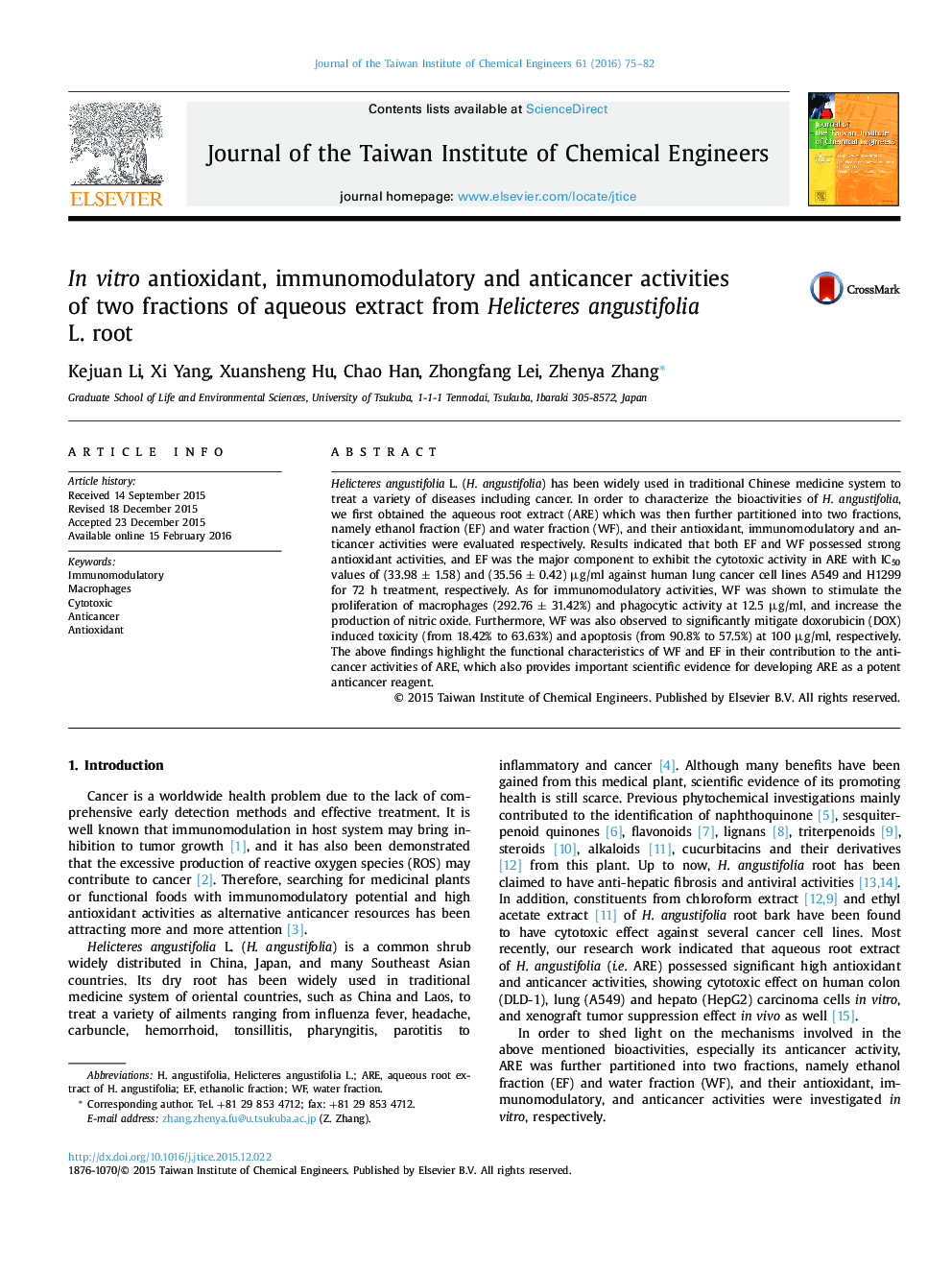| کد مقاله | کد نشریه | سال انتشار | مقاله انگلیسی | نسخه تمام متن |
|---|---|---|---|---|
| 690344 | 1460413 | 2016 | 8 صفحه PDF | دانلود رایگان |

• This is the first report on strong immunomodulatory effect of H. angustifolia L.
• EF and WF contained high contents of phenolics and polysaccharides, respectively.
• EF mainly contributed to the cytotoxicity of aqueous extract of this plant.
• WF showed remarkable immunomodulatory activity on macrophages RAW264.7 cells and was able to protect macrophages cells from doxorubicin induced toxicity and apoptosis.
Helicteres angustifolia L. (H. angustifolia) has been widely used in traditional Chinese medicine system to treat a variety of diseases including cancer. In order to characterize the bioactivities of H. angustifolia, we first obtained the aqueous root extract (ARE) which was then further partitioned into two fractions, namely ethanol fraction (EF) and water fraction (WF), and their antioxidant, immunomodulatory and anticancer activities were evaluated respectively. Results indicated that both EF and WF possessed strong antioxidant activities, and EF was the major component to exhibit the cytotoxic activity in ARE with IC50 values of (33.98 ± 1.58) and (35.56 ± 0.42) µg/ml against human lung cancer cell lines A549 and H1299 for 72 h treatment, respectively. As for immunomodulatory activities, WF was shown to stimulate the proliferation of macrophages (292.76 ± 31.42%) and phagocytic activity at 12.5 µg/ml, and increase the production of nitric oxide. Furthermore, WF was also observed to significantly mitigate doxorubicin (DOX) induced toxicity (from 18.42% to 63.63%) and apoptosis (from 90.8% to 57.5%) at 100 µg/ml, respectively. The above findings highlight the functional characteristics of WF and EF in their contribution to the anticancer activities of ARE, which also provides important scientific evidence for developing ARE as a potent anticancer reagent.
Figure optionsDownload as PowerPoint slide
Journal: Journal of the Taiwan Institute of Chemical Engineers - Volume 61, April 2016, Pages 75–82